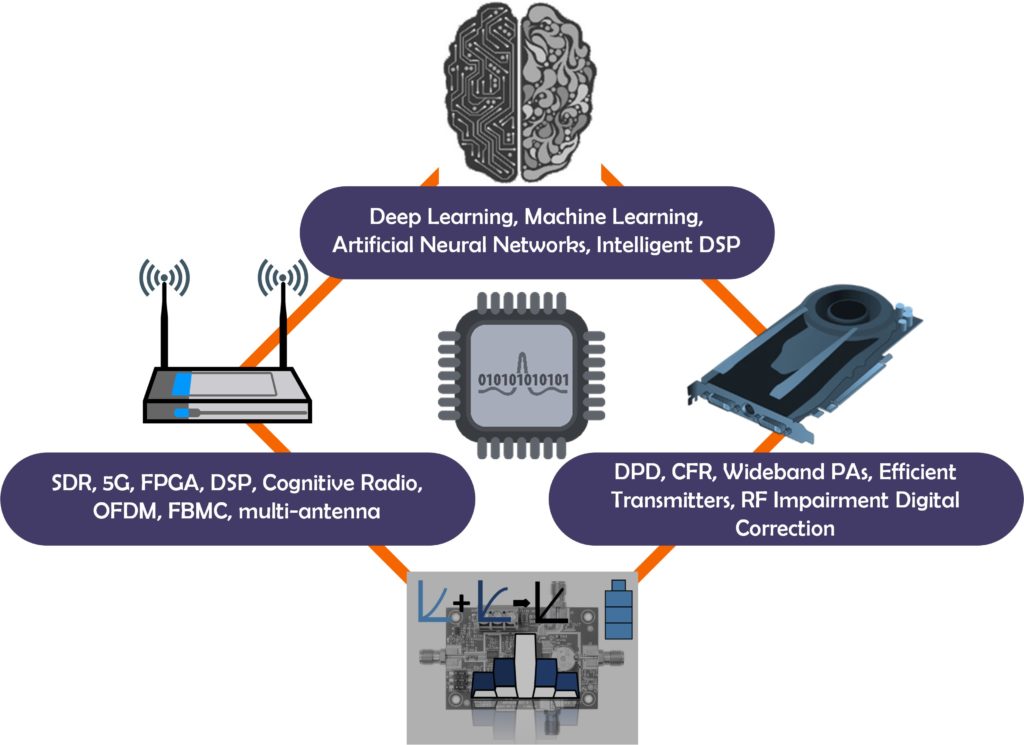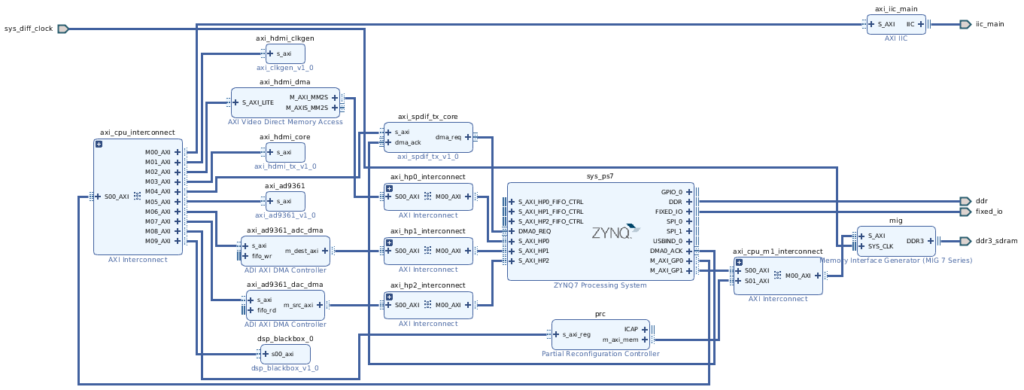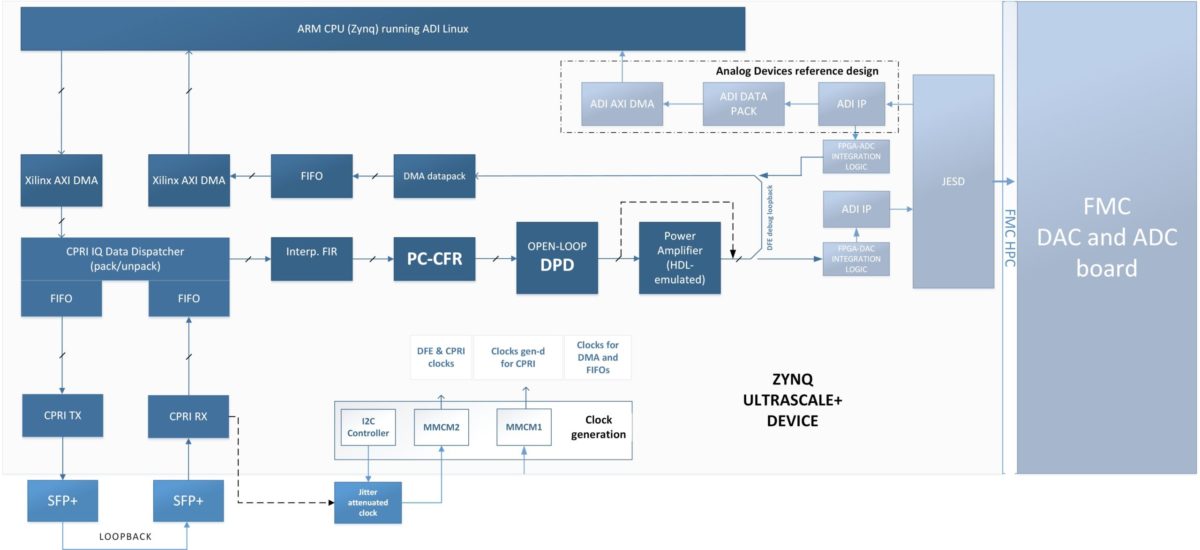Propelling the digital transformation of the society
6G is expected to be the brain of the digital automation, integrating consolidated and pioneering technologies. The foundations of this revolutionary roadmap have already been set in 5G technologies, which start offering new digitalized services and applications to citizens and businesses.
Adaptive processing technologies will constitute a neuralgic part of 6G systems and a key enabler towards the digital transformation of the society.
In this sense, ADAPT provides innovating adaptive signal and data processing solutions for smart and autonomous systems, residing for example at the edge of the operator networks.
The goal is to guarantee best-in-class performance, energy efficiency and sustainability for applications, radio access network infrastructure and connected devices.

AI-assisted adaptive signal and data processing for 6G systems
5G and especially 6G systems need to offer seamless and intelligent reconfigurability at all-levels, including the underlying hardware-accelerated functions, digital signal processing elements, RF subsystems, and air interface. This is key to reach a whole new level of network automation and virtualization featuring fully adaptive and flexible building blocks. The O-RAN softwarized architecture is the blueprint setting the base to capitalize the benefits of such reconfigurable solutions. Moreover, AI-assisted adaptive processing techniques are also required to boost the base station and user equipment energy efficiency, while minimizing the radio interference.
In this realm, ADAPT provides innovating signal and data processing solutions for O-RAN defined edge hosts that leverage advanced computing solutions (DU), radio units (RU), heterogeneous SDR systems and vertical applications used in current 5G and forthcoming 6G systems. To achieve that, state-of-the-art software overlays, adaptive processing frameworks and AI techniques are coupled with programmable accelerators, embedded computing elements and general-purpose processors.

Research lines
This research line features consolidated R&D activities focusing on the design and implementation of flexible SDR technologies using hardware acceleration of bit intensive functions. On top of that we developed a framework for the seamless real-time partial reconfiguration of programmable logic and embedded software functions, which can be used for adaptive processing of DSP functions, embedded applications, and NFV needs. Looking forward to beyond 5G and 6G systems design, we aim at capitalizing our previous expertise on designing, implementing and experimentally validating functional splits, to provide innovations in O-RAN topologies (including cell-free systems). Moreover, the following new R&D activities have been added to our roadmap:
- Heterogeneous processing solutions in AI-enhanced system-on-chip (SoC) devices.
- Intra-Edge node joint optimization of computing and radio resources.
- Disaggregated Edge processing for latency-sensitive vertical applications.

HW-SW codesign using a Zynq-7000 for the functional split 6 at the eNB side.

MAC-PHY interface for an uninterrupted real-time operation.
This research line deals with crest factor reduction (CFR) and digital predistortion (DPD) for fronthaul & backhaul radios. To deal with the increasing complexity of the B5G DPD scenarios, like those involving massive antenna arrays, machine learning techniques are applied to minimize the processing requirements.
The FPGA implementation for energy-efficient multidimensional wideband DPD subsystems is also addressed. New radio access schemes raise the need for novel digital linearization techniques for optical and photonic communication systems, and for distributed AI-DPD processing both for terrestrial and satellite CRAN-MEC architectures. Moreover, KPI-driven dataset reduction and neural network pruning techniques are investigated to enable faster training and system adaptivity.

Adaptive DPD architecture to linearize the transmitter power amplifier

Digital front-end building blocks for a digitally linearized remote radio head (RRH)
Featured proof-of-concepts
RAN functional splits (FS)
- End-to-end PoC showcasing 3GPPP FS6 and FS8: SDR HW hosts a proprietary FPGA-based LTE PHY-layer (eNB & UE), interfaced with the MAC layer of LENA (LTE extensions of ns-3).
- Joint development with CTTC’s MONET department (project H2020 Flex5Gware). The PoC is also summarized in this section of GEDOMIS® testbed.
- Integrated in a larger PoC featuring other external partners (CLEEN workshop 2017).
Optimal waveform co-existence
- In-band spectral cohabitation of a broadband LTE-like FBMC waveform (FPGA-based implementation) with narrowband TETRA/TETRAPOL transmissions.
- Developed in collaboration with Airbus DS and SINTEF during the FP7 Empahtic project:
- Joint demonstration with Airbus DS and CEA Leti at CrownCom 2016:
Interference mitigation in Heterogeneous Networks
- Opportunistic femto communication in a macro/femto cell spectral coexistence scenario (threshold-based interference detection). Real-time baseband processing of macro & femto BSs & UEs
- Entirely developed by PHYCOM members (project FP7 BeFEMTO).
- The video below was showcased in EuCNC 2014. It is recommended to go through these slides before watching the video.
More information:
Agile and high-performance SDR systems
SHAPER
GEDOMIS® testbed
